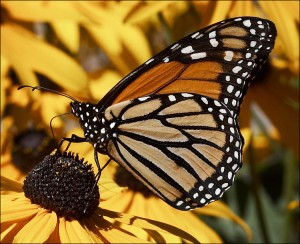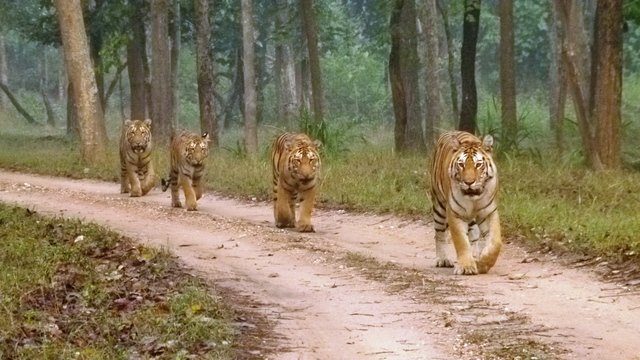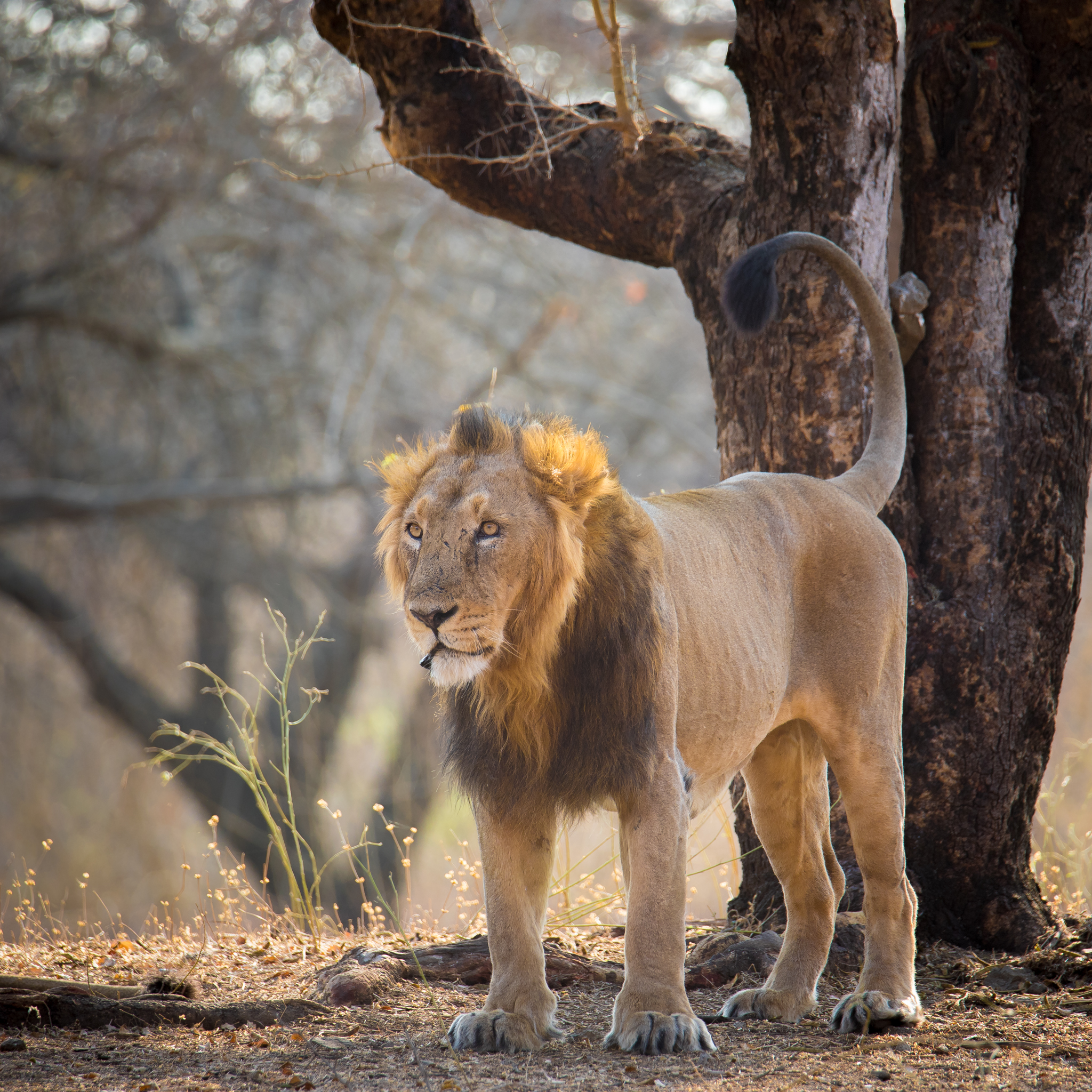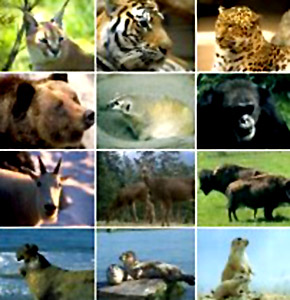 The most common of Indian butterflies are becoming uncommon these days. Mega species like tigers and elephants get a little attention but insects are regarded more like pests or mere things of beauty that have no bigger roles to play. But experts say it is this loss of interest in saving small sized species like butterflies that is most fearsome because with the disappearance of these fluttered friends, plants too will lose their pollinators and fail to bloom, bear fruit or provide food for the planet.
The most common of Indian butterflies are becoming uncommon these days. Mega species like tigers and elephants get a little attention but insects are regarded more like pests or mere things of beauty that have no bigger roles to play. But experts say it is this loss of interest in saving small sized species like butterflies that is most fearsome because with the disappearance of these fluttered friends, plants too will lose their pollinators and fail to bloom, bear fruit or provide food for the planet.
Of the 20,000 butterfly species known in the world, about 1300 are found in India. But of these more than hundred are threatened and face extinction.
According to Surya Prakash, a professor at the department of life sciences at Jawaharlal Nehru University, “Few are aware of the crucial pollination role the butterfly plays, which is second only to the honeybee.”
There is problem with the bees too.
As per the director of the Zoological Survey of India, Dr. K Venkatraman, over the years the number of honeybees too has decreased as per their survey conducted in the Sunderbans.
Pollination is the way plants reproduce. It is also a process that leads to flowers, fruits and formation of seeds. Therefore, from the human point of view it is a crucial step that ensures that we get ample grains, crops, vegetables etc. to eat.
Around 70% of all food crops are pollinated by insects, according to the Food and Agriculture Organization. In Europe, the proportion is 84%. While no corresponding data is available for India, there’s nothing to suggest that food crops here are pollinated by other means. This means that a decline in the number of pollinating insects could have catastrophic effects.
“If human beings were to disappear tomorrow, the world would go on with little change, but if insects were to disappear, I doubt the human species could last more than a few months,” wrote noted American biologist E.O. Wilson.
Isaac Kehimkar, general manager (programmes) at the Bombay Natural History Society and author of The Book of Indian Butterflies, fumes, “Lack of knowledge and obsession with mega-fauna is killing entomology as a subject. It has become professionally unsustainable today as there is a fight for the same set of funds which inevitably go to the tiger or one of the mega-fauna species,” he says.
But the ignorance about the important role of the pollinators like honeybees and butterflies has only been lifted in the US too in recent years.
S. Ramani, project coordinator, All India Coordinated Research Project on Honey Bees and Pollinators says that it was in the past few years that US farmers noticed the absence of bee hives in their property and then started questioning whether that harmed their crop yield.
“The expected direct reduction in total agricultural production in the absence of animal pollination has been estimated to range from 3% to 8%, showing that agriculture has become more pollinator-dependent. It has been suggested that we may be in the middle of a global pollination crisis,” adds the researcher.
In India, it is still not possible to ascertain the direct threat that crops yields may have to the decreased number of pollinators in the insect world, but it is certainly news that needs attention.
A report put out by the United Nations Environment Programme says,
“When large habitats are fragmented into small isolated patches, food sources become scarcer for resident animals. Populations may then decline to the point that they are no longer able to benefit plants. As certain wild pollinators need undisturbed habitat for nesting, roosting, foraging and sometimes specific larval host plants, they are very susceptible to habitat degradation and fragmentation in particular.”
“Human activities have impacted the landscape through fragmentation, degradation and destruction of natural habitats and the creation of new anthropogenic ones.”
The clear problem that arises again is the human interference with nature. Tigers, Lions, Leopards, Elephants, Crocodiles, Vultures, Monkeys, Deers, Turtles, Fishes, Corals, Frogs, Butterflies and the Honeybees – They are all victims of the unplanned actions of human beings that wipe out forests without once thinking of the consequences of the actions.
For big species at least information and funds are comparatively easy to get, but for the small but no less significant species like the butterflies, the dearth of information is as responsible for pushing them to oblivion as the lack of protection and conservation.
Of course, we must save the tigers. But we cannot neglect the butterflies either.
Related Stories:
Research Centre to Study Spiders
Increased Frgo Leg Demand Threaten Amphibians to extinction
Pangolin Rescued from a Well in Gujarat
Reference: livemint






Hi atula,
I visited Mughal gardens a couple of weeks ago, and saw maybe a zillion beautiful flowers, yes, a few of them even scented.
And I saw one butterfly.
One!!
What’s happening?
How do we bring them back?
Would really appreciate if someone more knowledgeable, maybe you, writes or blogs or puts out a few newspaper articles about plants/ flowers we can grow that butterflies would thrive on, or what else we can do to bring them back…
Thanks.
Thank you Jamila for writing to us. It is really disheartening to find that butterlfies are not visiting flowers as frequently as they should. Your point has been noted, and we will soon carry an article that suggests what kind of flowers can be grown to encourage more butterflies. Regarding Mughal gardens, the flowers are already present and absence of butterflies might have been because of the crowd around. Butterflies get disturbed with so many people. I say this because in the small patch of garden in our locality there are many butterflies that are seen. Let us find out more about this at our end. Thanks again. We need more vigilant people like you in the community.
Hi. I came across your website and loved it, This is very interesting. I am an architecture student designing a biodiversity park and I am interested in knowing about the species of butterflies extinct in India. If you have any source material or any advice I would really appreciate it.
Hi Salwa, Good to know about your plants for designing a biodiversity park. As far as I know, no butterfly has till date become extinct in India although there are threats like habitat destruction that are always looming. You could get in touch with Butterfly Expert Peter Smetacek who’ll have greater knowledge of the extinct species if there are any in India. Hope this helps. Keep visiting.
Hi, I may have less knowledge on butterflies around us but I am really interested in knowing how to conserve them from getting extinct. Since a month ago, cyclone “fani” created widespread destruction of trees and natural vegetation in the state of odisha which resulted in a sharp decline in not
only butterflies but also in various bird species around odisha. So any suggestions on saving these kind creatures would be helpful
Hi Saswat, Thank you for you message. You have asked a great question, which I will try to answer from what I know about butterflies. As you correctly observed, because of the destruction caused by Cyclone Fani, much of the natural vegetation and biodiversity has been destroyed. So the most urgent need is to grow the local plants again. If you have a garden space, you can start from there. Better is to involve more friends and neighbours and start re-wilding or at least plating local varieties of plants all around you.
Butterflies may look fragile by they have a good sense of when the weather is starting to look bad. They usually take shelter in trees – dead or alive, grass or under leaves. If a large devastation has occurred, it is still these that will help them find a place to lay eggs again. As the butterfly range are large, the threat of any species entirely being wiped off because of the cyclone is low as they might have travelled to safer regions perceiving the storm.
You can plant host plants at home (See if this book is helpful in identifying butterflies and their host plants – https://issuu.com/pratyushmohapatra/docs/butterflies_of_bonai__odisha)
Once a garden with flowers start growing, butterflies will automatically appear again.